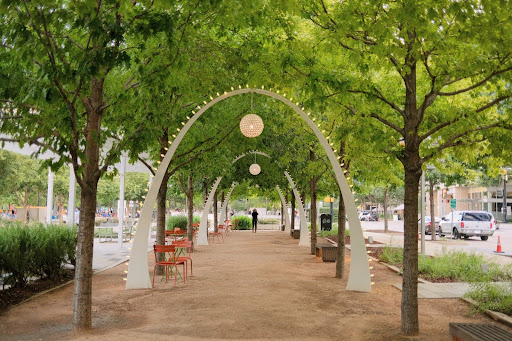
Date January 15, 2024
Argyle, Texas, boasts terrific biodiversity, evidenced by the variety of native tree species in and around the city. Any of these trees would be an excellent addition to a property, as they’re naturally resistant to the region’s climate extremes and often serve a practical function in addition to their ornamental value. This article looks at four of Argyle’s unique tree species and how to care for them.
Eastern Red Cedar
Image via Flickr by Homer Edward Price
Evergreen and fragrant, the eastern red cedar typically grows to around 30 to 40 feet, though some are as tall as 90 feet. According to the Argyle Urban Forest Ecosystem Analysis of 2019, it ranks second among the city’s top 20 oxygen-production species.
The eastern red cedar is drought tolerant, making it well suited to the hot North Texas summers. It also thrives in a variety of soil types. To maintain an eastern red cedar on their property, homeowners will need to place it in full sun and provide sufficient drainage, as overwatering can cause problems.
Post Oak
The post oak is one of the most common tree species in North Texas and the leading oxygen-production species noted in the Argyle Urban Forest Ecosystem Analysis. It’s a stately species with an average height of around 40 to 50 feet and a canopy spread of about 80 feet. Its wood (marketed as white oak) is often used as posts, construction timbers, and railroad crossties.
The drought-tolerant post oak needs little to no irrigation, and it grows well in even poor soil conditions, so there isn’t much for property owners to do in terms of care. It’s vital not to disturb the root system with any property construction projects or expose it to too much water, which could hinder growth and overall health.
Black Locust
The black locust ranges in height from 30 to 70 feet and is a shrubby species commonly found on farmlands and homesteads. Its heavy, strong, and durable wood makes it suitable for fence posts, railroad ties, and tree nails.
Though the black locust thrives best in moist and well-drained soil, it can also do well in dry regions. Homeowners wanting to grow one on their property should bear in mind that it can spread quickly via root sprouts and seed proliferation.
Blackjack Oak
At 15 to 45 feet tall, the blackjack oak is a medium-sized species. Its foliage is a glossy forest green in spring and reddish-brown in fall. Its wood is good for firewood, for use as posts, and for being made into charcoal.
The blackjack oak is relatively easy to care for. It doesn’t need as much light as most oaks, nor does it need much water, as it’s an extremely drought-tolerant species. Soil quality isn’t a critical factor either.
To learn more about tree species native to North Texas, contact one of our arboriculture experts at TreeNewal. Along with a broad array of tree care services, we specialize in providing dependable consultations to property owners about tree health and maintenance. Call us at 817-385-9552 or submit an inquiry online to discover how we can help you beautify your space.









